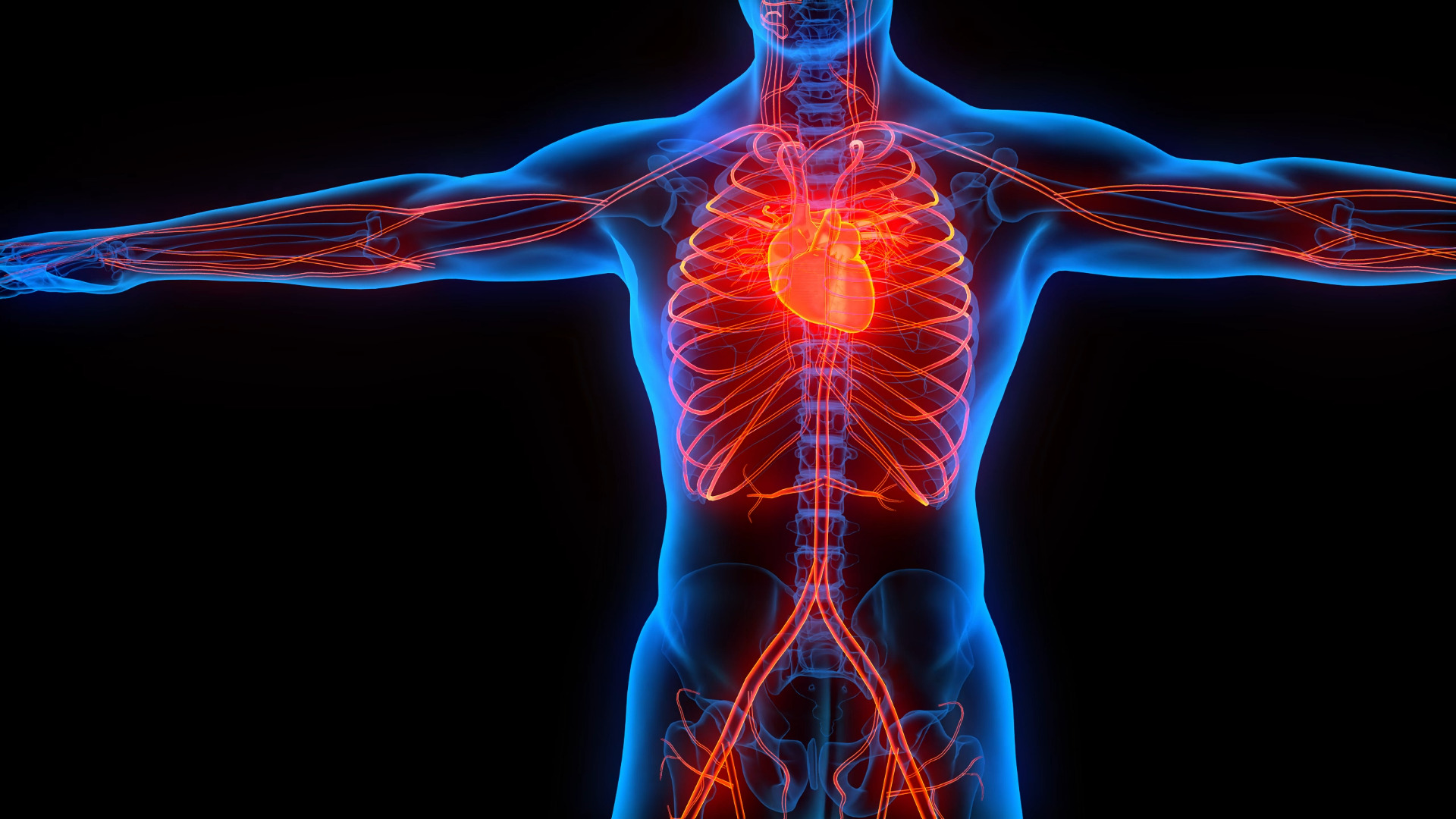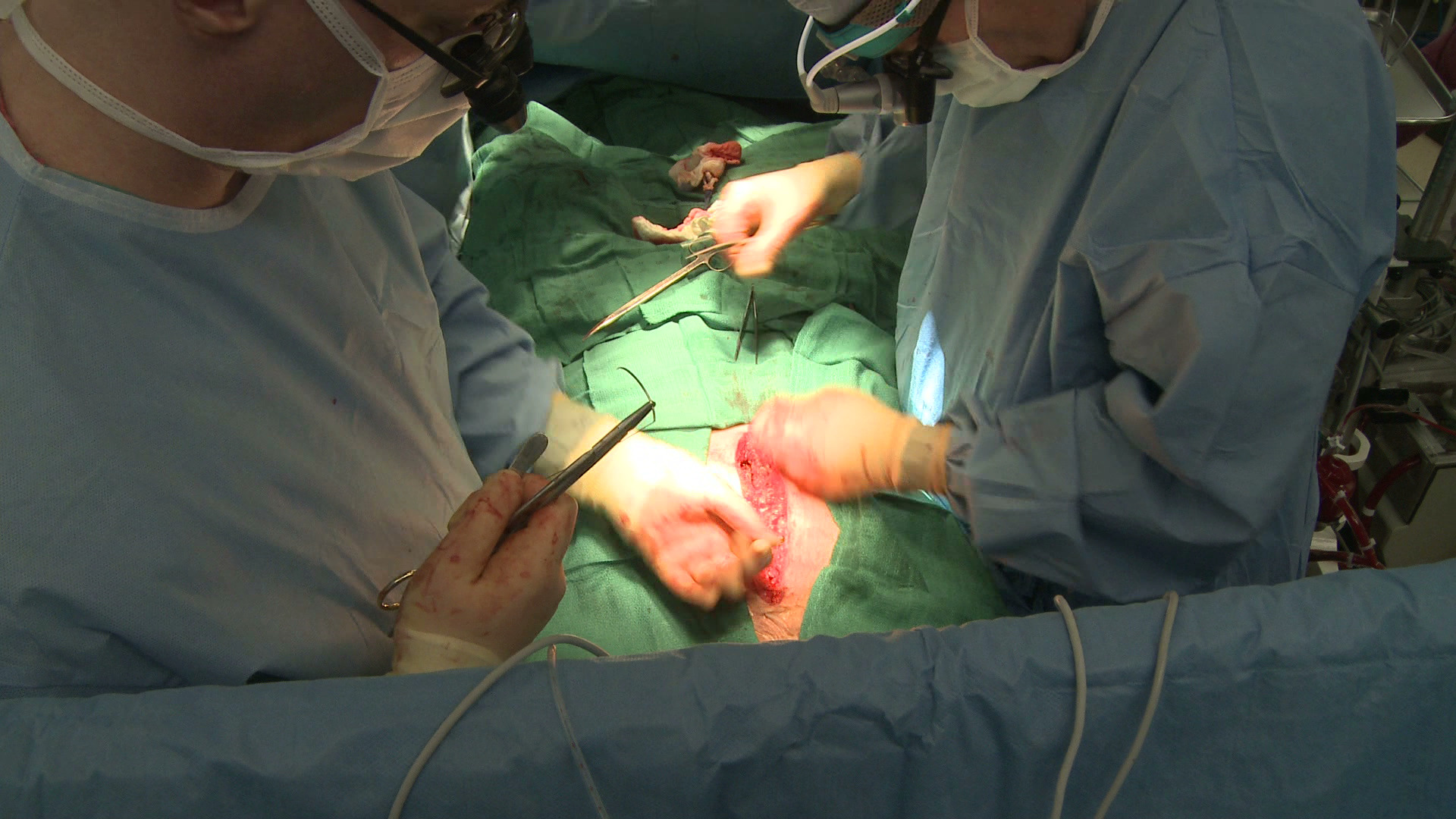Learning objectives
- Describe the mechanism and causes of tension pneumothorax
- Diagnose tension pneumothorax
- Manage tension pneumothorax
Background
- Pneumothorax is the collapse of the lung when air accumulates between the parietal and visceral pleura inside the chest
- Air outside the lung inside the thoracic cavity creates pressure on the lung and can lead to its collapse
- Can be traumatic or iatrogenic
- Tension pneumothorax: Shift in mediastinal structures, results from air under positive pressure trapped in the pleural space through a one-way valve system
- Rare, life-threatening condition
- Commonly occurs in intensive care unit ventilated patients
Causes
| Iatrogenic | Central venous catheterization in the subclavian or internal jugular vein |
| Lung biopsy | |
| Barotrauma due to positive pressure ventilation | |
| Percutaneous tracheostomy | |
| Thoracentesis | |
| Pacemaker insertion |
|
| Bronchoscopy | |
| Cardiopulmonary resuscitation | |
| Intercostal nerve block | |
| External trauma | Penetrating or blunt trauma |
| Rib fracture | |
| Diving or flying | |
| Other | Idiopathic spontaneous pneumothorax |
| Open pneumothorax | |
| Conversion of spontaneous pneumothorax to tension |
Signs & symptoms
- Sharp pleuritic pain that can radiate to the ipsilateral back or shoulder
- Increased respiratory rate
- Dyspnea
- Retractions
- Decreased or absent breath sounds, reduced tactile fremitus, hyper-resonant percussion sounds, and possibly asymmetrical lung expansion upon lung auscultation
- Signs of hemodynamic instability with hypotension and tachycardia
- Cyanosis
- Jugular vein distension
- Subcutaneous emphysema
- In severe cases: acute respiratory failure, cardiac arrest
Diagnosis
- Patient hemodynamically unstable and in acute respiratory failure: Bedside ultrasound, stabilize patient and assess airway, breathing, and circulation
- Patient hemodynamically stable: Chest X-ray:
- Effacement of lung markings distal to the edge of the visceral pleura
- Complete ipsilateral lung collapse
- Mediastinal shift away from the pneumothorax
- Subcutaneous emphysema
- Tracheal deviation to the contralateral side
- Flattening of the hemidiaphragm on the ipsilateral side
- Diagnosis unclear on chest X-ray: Chest CT
Management
- Patient with chest trauma
- Assess airway, breathing, and circulation
- Cover penetrating chest wound with an airtight occlusive bandage and clean plastic sheeting
- Administer 100% supplemental oxygen
- Avoid positive pressure ventilation initially
- Positive pressure ventilation is possible after a chest tube is placed
- Hemodynamically unstable patient
- Immediate needle decompression
- Chest X-ray after needle decompression
- Place chest tube
- If needle decompression fails: Video-assisted thoracoscopic surgery or thoracotomy
- Hemodynamically stable patient
- Diagnostic imaging can be performed prior to treatment
Keep in mind
- Cardiac tamponade can clinically mimic tension pneumothorax
- Patients with high peak inspiratory pressure are at greater risk of tension pneumothorax
- There is a high suspicion of tension pneumothorax when the patient becomes hemodynamically unstable or goes into cardiac arrest
- If a chest tube is malpositioned or becomes plugged, the pneumothorax can recur
- Administer local anesthesia or adequate analgesia/sedation in stable patients
Suggested reading
- Jalota Sahota R, Sayad E. Tension Pneumothorax. [Updated 2022 Nov 28]. In: StatPearls [Internet]. Treasure Island (FL): StatPearls Publishing; 2022 Jan-. Available from: https://www.ncbi.nlm.nih.gov/books/NBK559090/
- MacDuff A, Arnold A, Harvey J. Management of spontaneous pneumothorax: British Thoracic Society pleural disease guideline 2010. Thorax. 2010;65(Suppl 2):ii18.
- Paramasivam E, Bodenham A. Air leaks, pneumothorax, and chest drains. Continuing Education in Anaesthesia Critical Care & Pain. 2008;8(6):204-9.
We would love to hear from you. If you should detect any errors, email us [email protected]








